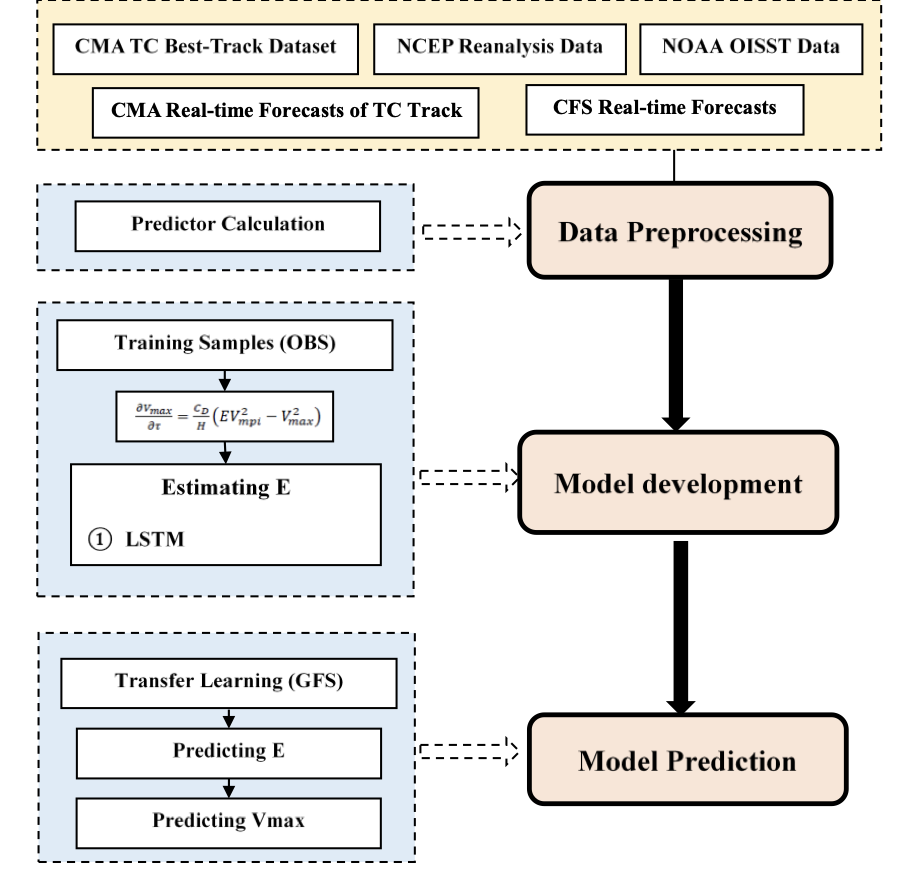A intensity prediction scheme of tropical cyclones (TCs) based on the energetially based dynamical system (EBDS) for the western North Pacific (WNP) has been developed using the machine learning method called Long Short-Term Memory (LSTM). In the EBDS, a dynamical efficiency is introduced to the intensification potential of a TC system. The dynamical efficiency E (0 ≤ E ≤ 1) reflects the effective conversion of potential energy production to kinetic energy production for the TC system. The EBDS comprises four free parameters, including the time-dependent E, maximum potential intensity, surface drag coefficient, and undetermined height parameter. The last two parameters are considered as constants. With training samples from the observation, optimal predictors are selected first, and E is further estimated based on LSTM for the period. Then, we transfer the learned features in the observations to perform further training for the Global Forecast System (GFS) forecast data in the past years. Finally, TC intensity forecasts are conducted based on the GFS environmental forecasts and CMA TC track forecasts.
A Logistic-Growth-Equation-based Intensity Prediction Scheme for Western North Pacific Tropical Cyclones (LGEM-WNP)

EBDS-WNPForecast Error for Typhoon Track in 2015-2017

Comparison of TC intensity Errors of EBDS-WNP and CMA Subjective Forecasts in 2015-2017